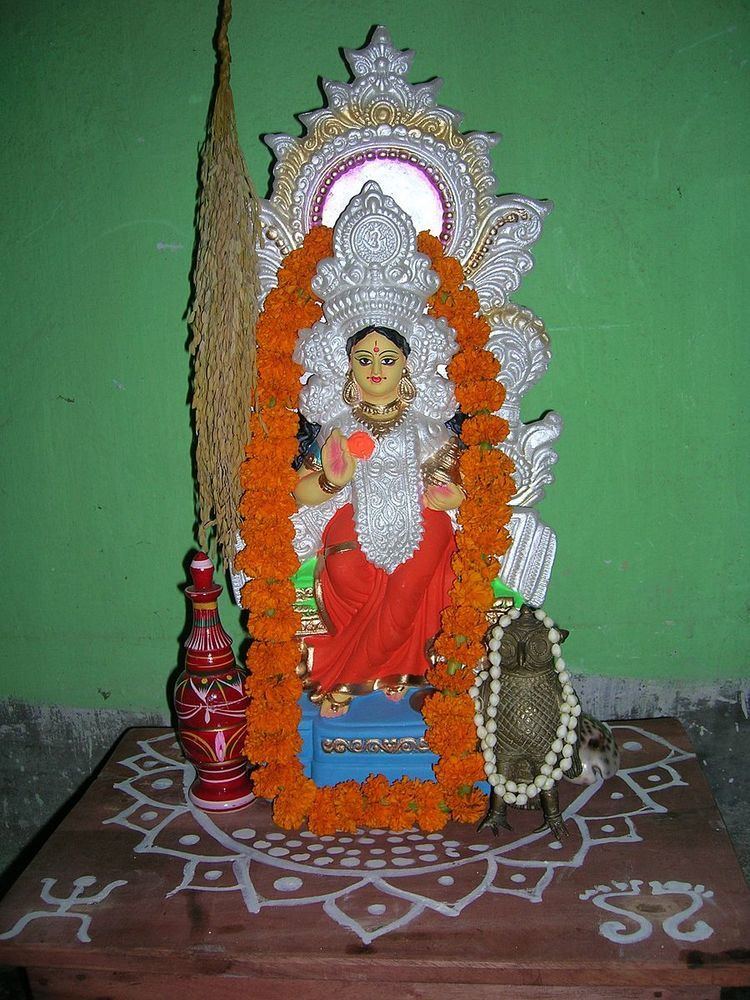 | ||
Alpana or alpona refers to colourful motifs, sacred art or painting done on a horizontal surface on auspicious occasions in Bengal like Puja, wedding or community events . The art typically has some religious significance. This type of art is found on the Indian subcontinent. The word Alpana is derived from the Sanskrit alimpana, which means 'to plaster' or 'to coat with'.
Contents
Materials used to draw an Alpana
Traditionally in Bengal, alpana is strictly white since the liquid paste used for alpana is rice powder mixed in water. Nowadays there is somewhat change in materials. Some fabric colours are used along with some glue to give some long life of the alpana. Alpana is although generally white some green, red forms also drawn. Traditionally the green colouration done by tree leaves and red colour by sindur .
Uses of Alpana
The art is known by different names in various parts of India and its use varies from region to region. The most common type of alpana all around India is Rangoli, which uses colored sand to draw a design. The artwork is mainly done by women. They are conscious of the changing moods of the seasons and their creativity thus marks the changing cycle of the year.
Circular alpana is used as a holy pedestal during festivals such as the Bengal,Saraswati puja (also referred to as vasant panchami) in Bengal and the Festival of Lights (Diwali). Items drawn with the technique include the sun, swastika, a rice stem, an owl, a ladder, a plough, the footprints of the goddess Lakshmi, a fish, betel, a lotus, shankhalata (a snake)and some times just some abstract art to look beautiful .
